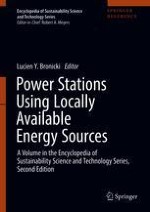2018 | OriginalPaper | Chapter
Reservoir Engineering in Geothermal Fields
Authors : Enrique Lima, Hiroyuki Tokita, Hideki Hatanaka
Published in: Power Stations Using Locally Available Energy Sources
Publisher: Springer New York
Activate our intelligent search to find suitable subject content or patents.
Select sections of text to find matching patents with Artificial Intelligence. powered by
Select sections of text to find additional relevant content using AI-assisted search. powered by
